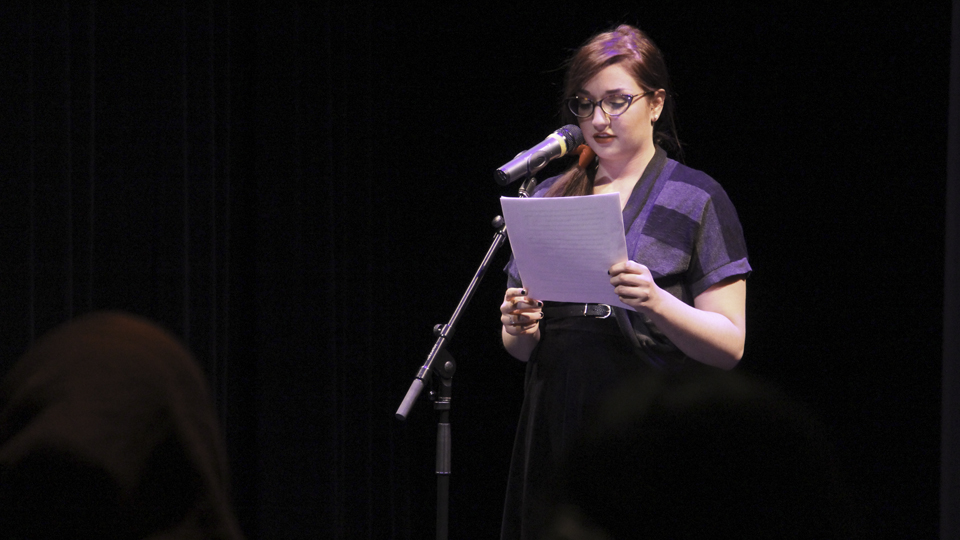“Writing doesn’t just allow me to tell a story. It allows me to feel at peace with the event I’m writing about, as if writing about what happened somehow facilitates the healing of psychological wounds.” So reads the preface to this year’s edition of Mindwaves, UTM’s journal of creative non-fiction published by students in the professional writing and communication program.
This eighth annual edition was launched last Thursday in the MiST Theatre with refreshments, book sales, and readings of excerpts from the stories. The dimly lit theatre was filled with supportive friends, family, and students.
Larissa Ho, this year’s editor-in-chief of the Mindwaves Collective, opened the night by introducing second-year student Lyndsay Sinko with “Remembering Tomorrow”, a story about her grandmother’s visit from Italy and the connection between generations of women in a family. Sinko was followed by Hiba Taboulsi with “Lighter”, a story about literally setting a storage room on fire with a lighter.
The works throughout the first half of the evening ranged widely, from Kristen Lortiz’s “The Blue Cloth” about her discovery of her mother’s cancer to “Kentucky Hill” by third-year commerce student Kevin Ludena, a story about a first joint. Dylan Smart’s “Pop Bottle” and Laura Gillis’s “Lemon Meringue Pie” also went over well.
After a brief intermission, the night continued with more thoughtful and lighthearted writings. Rob Redford’s “Rare Cards”, a chilling recollection of the attempt to understand his mother’s depression, was followed by Jill Kennedy’s “Modern Beatniks”, featuring a character all too jocular about the topic of suicide. “I was both interested and envious of him,” Kennedy commented afterwards.
Also good were the sad “Belmonts and Carnations” by Samantha Ashenhurst, in which she couldn’t let go of a relationship even after verifying that her boyfriend was cheating on her, and “The Pipe” by Matt Spadafora, in which he effectively made his childhood experiences of being bullied humorous. The night closed on Jai Sangha’s “A Trip to the Taj”, to which the audience responded with laughter.
This is Kennedy’s first time being published in a journal in or outside of the PWC program. “I was shocked and excited when I found out I was selected… I was too shy to submit my stories in the past but with graduation creeping toward me, I figured I would go for it and submit my work.”
Spadafora, a residence don, published writer, and fifth-year PWC and English student, was also happy to have his work published in Mindwaves. “Being selected was a shock for me,” he says. “I was one of the last stories selected, so I had about a week and a half of grumbling as I found out other stories were picked, but not me. So when I got the letter, I freaked out, naturally.”
Editors Nathalie Soulliere, Sandra Nehme, and Andrew Ihamaki were also selected from the PWC program. “Our role was to select and edit the stories for the collection,” Ihamaki says. “From there, we worked closely with the writers to edit and strengthen their already stellar pieces.” Ihamaki, a fourth-year art and art history and English student, has been published in Showing the Story: Creative Non-Fiction by New Writers, the newest anthology to be used as a textbook in the program.
“I know I face stories in my own life that are hard to tell, hard to relive and recount,” Ho’s preface concludes. “That’s why I continue to write them. I know that the writing heals my own wounds as well as invites the reader to do the same.”
Copies of Mindwaves were available at the launch for $10; a second print run is being considered, and in the meantime they are available for purchase.













Thanks, Annie, for the article!